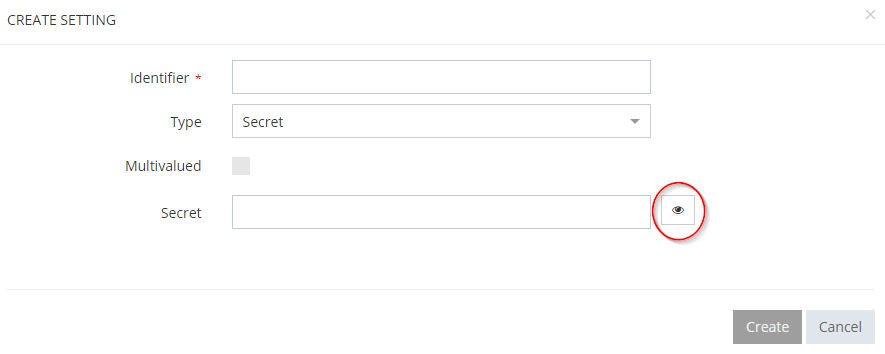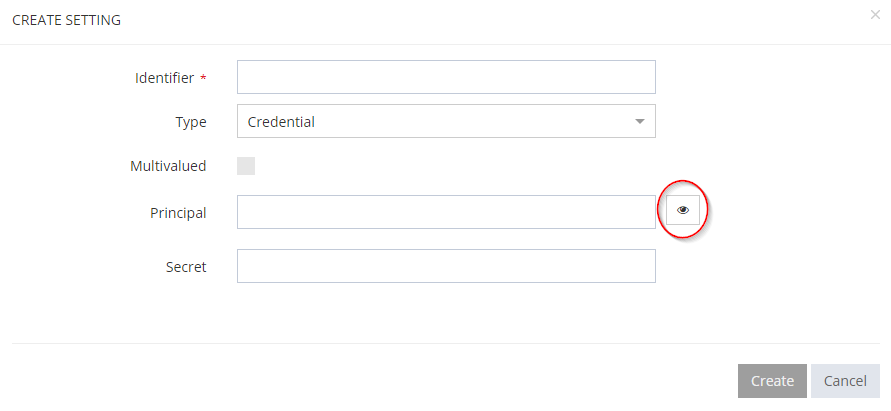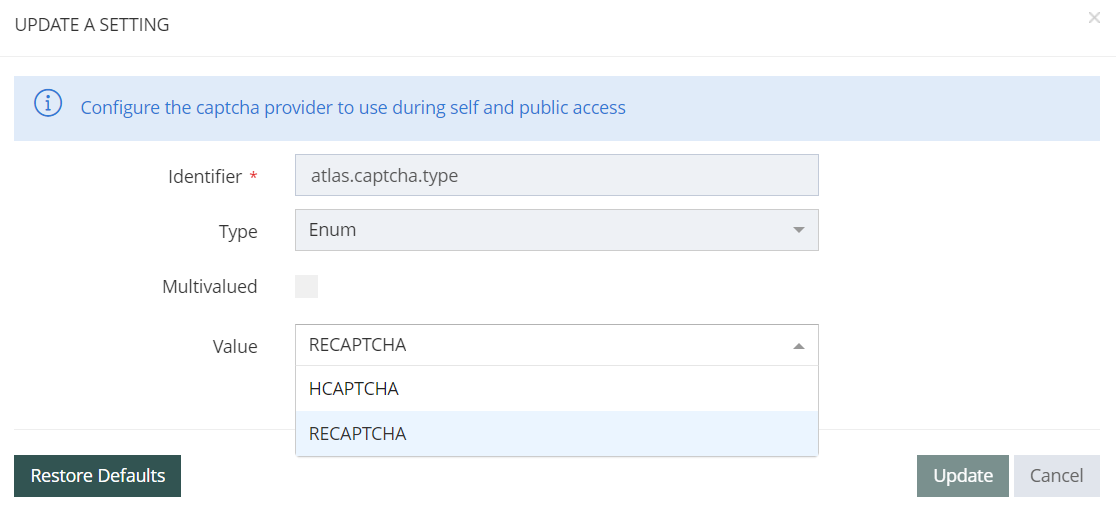Settings
Definition
The Settings are a key or value storage of properties that are configured per tenant and on different services (Identity, Business, Synchronization and Audit).
Each services are managed by different tabs.
There are two types of Settings:
Built-in: these Settings are predefined and they can be updated but not deleted.
Configurable: these Settings are created by the administrator, they can be updated and deleted.
Configuration
You can access the Settings configuration :
by clicking on "System" → Settings
by clicking on "System" → "Configurations" → Service on which the element depend and perform an import/export.
Properties
Properties name | Type | Mandatory | Description | Values (default value in bold) | Modifiable after creation |
|---|---|---|---|---|---|
Identifier |
| YES | The id is the unique identifier of each Setting. Conventions dictate that it begins with the service trigram, and then follows a dot sequence of key parts. Example: idm.search.max-size | - | NO |
Type |
| YES | Allows to define the type of the value stored by the Setting. | Boolean, Byte, Byte Array, Character, Date, Date an Time, Double, Duration, Enum, Float, Integer, Json, Long, Object, Short, String, Secret, Credential. | NO |
Multivalued |
| NO | Indicates if the Setting can have several values. | true, false | NO |
Value |
| NO | Allows to define the value(s) of the Setting. | - | YES |
The description for a custom setting is manually editable by an I18N key.
Secret and Credential Settings
These types of Settings can only be managed by an administrator with the appropriate rights:
Settings management: sys.idm-setting-crud, sys.bum-setting-crud, sys.sync-setting-crud
Secret management: sys.idm-setting-secretmanager, sys.bum-setting-secretmanager, sys.sync-setting-secretmanager.
These secret Settings are always visible but cannot be edited if the administrator doesn't have the secret manager right.
It is possible to configure a Groovy script using the created Secret or Credential Settings to authenticate on a call to an external web service by SOAP envelope.
The Groovy script can be configured on an Object Policy or an Object validation rule for instance.
When running the Groovy script (either by lauching a scheduled job, or generating an event on an Object), the rule containing the Groovy script is executed.
Description | Preview |
|---|---|
A Secret Setting is a single secret. An Administrator can review Secret Settings. When opening them, they are displayed obfuscated. The Administrator must click on a specific "View" button to view the value in clear text. When exporting configurations, the Secret Settings are not exported by default when using the GUI. |  |
A Credential Setting is composed of username + secret. When exporting configurations, the Credential Settings are not exported by default when using the GUI. An Administrator can review Credential Settings. When opening them, they are displayed obfuscated. The Administrator must click on a specific "View" button to view the value in clear text. |  |
Built-in Settings
A built-in Setting can not be deleted.
The value of a built-in Setting can be updated.
The description is displayed:
by clicking on the tool tip button next to the Setting name
by clicking on the "edit" button.
Identity Service
Security Questions
Business Service
Synchronization Service
Audit Service
There is one built-in setting (audit.search.defaultFilter) on this service that is used to configure a search expression for audit events.
In this case, the event names that end with "execution" and "processing" will not be displayed in the audit report.
{
"NOT": {
"OR": [
{
"prop": "title",
"op": "ENDS_WITH",
"values": [
"_EXECUTION"
]
},
{
"prop": "title",
"op": "ENDS_WITH",
"values": [
"_PROCESSING"
]
}
]
}
}Notification Service
There is one built-in setting (audit.search.defaultFilter) on this service that is used to configure the Reporting collection where SMS Notification reports should be published.
If empty the publication will be disabled.
Access Service
Tenant Configuration Service
There is one built-in setting (atlas.captcha.type) on this service that is used to configure the type of captcha used (in Public Access Tasks for example).

RBA Configuration Service
To enable or disable RBA on a tenant, please use the following setting:
Setting Name | Type | Description |
|---|---|---|
|
| Enable or disable RBA on a tenant. When disabled, RBA policies are ignored and the authentication flow behaves as standard. |
